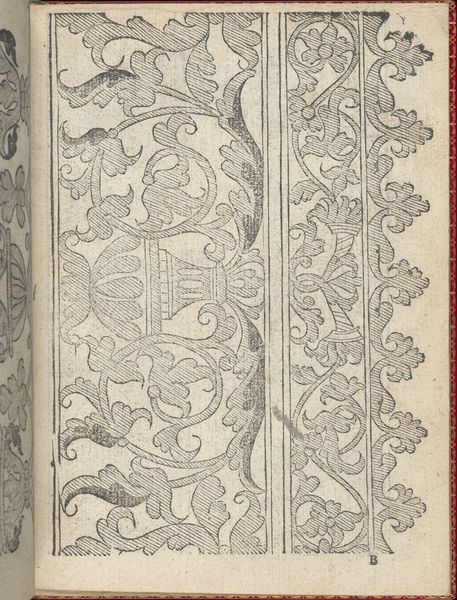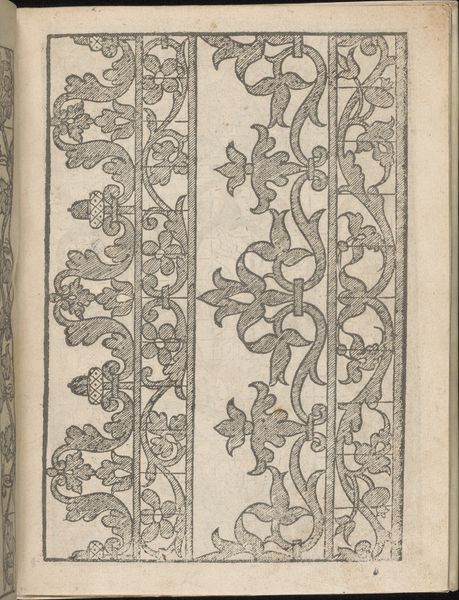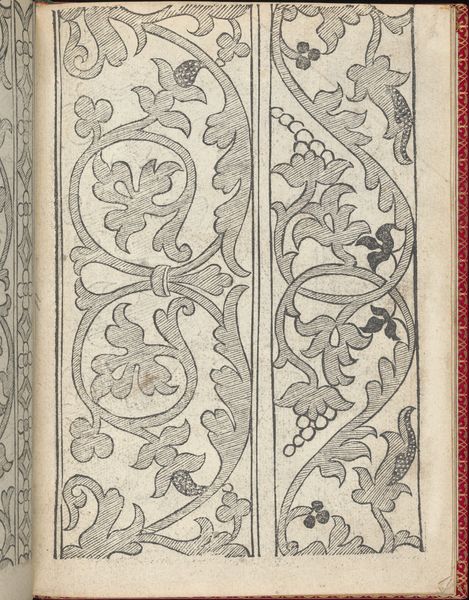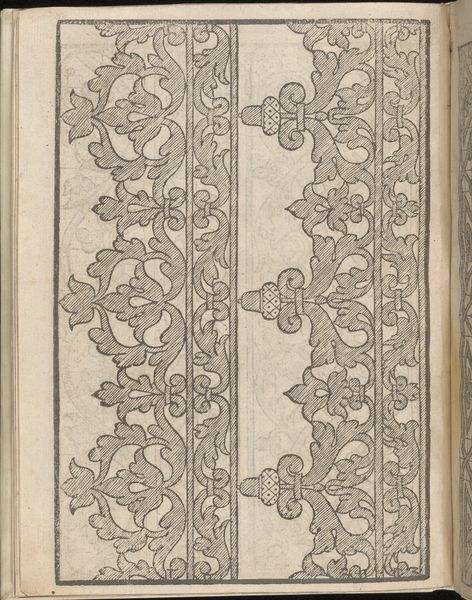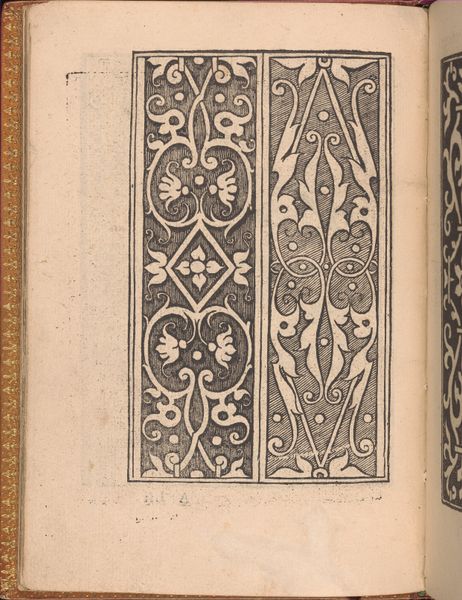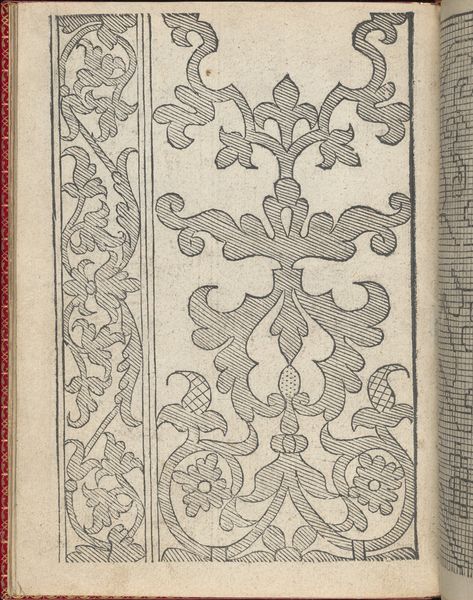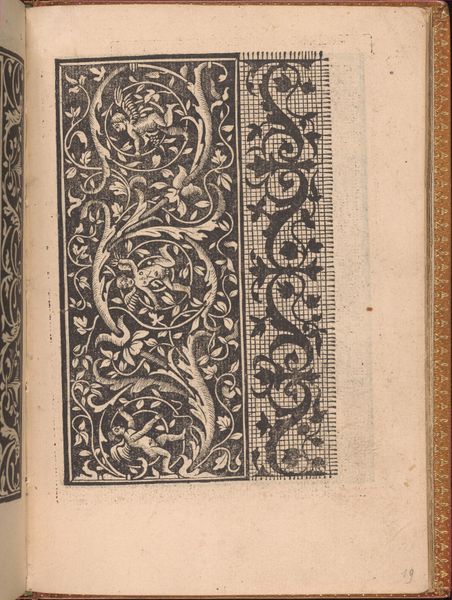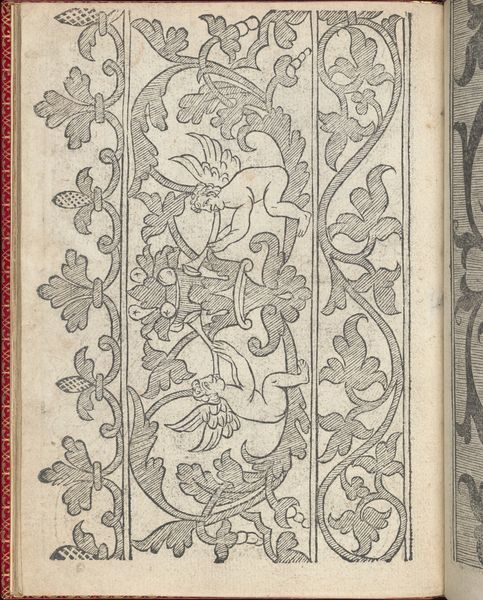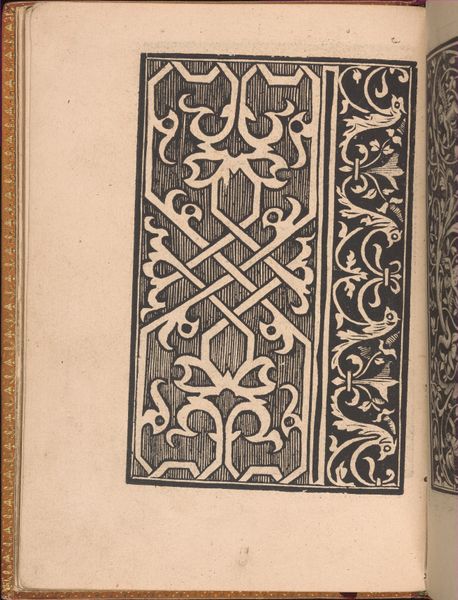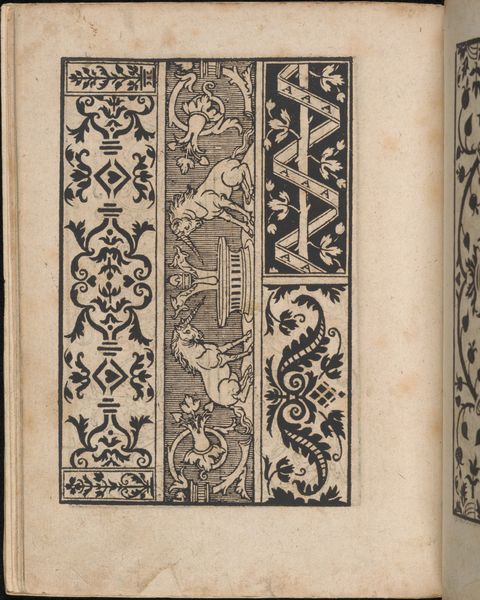
Il Monte. Opera Nova di Recami, page 9 (verso) 1557 - 1570
0:00
0:00
drawing, graphic-art, print, engraving
#
drawing
#
graphic-art
# print
#
book
#
11_renaissance
#
geometric
#
engraving
Dimensions: Overall: 7 7/8 x 5 11/16 in. (20 x 14.5 cm)
Copyright: Public Domain
Editor: This is "Il Monte. Opera Nova di Recami, page 9 (verso)," created sometime between 1557 and 1570, by Giovanni Antonio Bindoni. It's a page from a book, done with engraving. The detail is incredible! The geometric patterns are very interesting but seem so different from what we think of as fine art today. What strikes you about this page? Curator: I'm fascinated by the material process itself. Consider the labour involved in creating these intricate engravings, and the production of the book. These designs would have served as guides for lacemakers and embroiderers. This highlights the intertwined relationship between high art and craft, blurring the lines of what was considered "art" in the Renaissance. Who was the labourer and who was the artist, and what was the status of their patronage or business model? Editor: That's a good point, how the act of printing flattens that sense of a singular artist vision. Curator: Exactly. And the social context! These designs dictated taste and style. This wasn't just about personal expression; it was about dictating aesthetics within a specific social class. The very paper, the ink – all of it speaks to the networks of trade and consumption that underpinned Renaissance society. It's not simply the image but also how it circulated and how it was used that matters. Editor: So, you're saying it's less about the beautiful patterns themselves and more about how the book was actually made and used? Curator: Not "less about", but consider how the patterns and production methods reinforced certain social structures. We need to consider art making within the total arc of creation, distribution, reception, and even its ultimate impact on those doing the craft. It pushes us to think beyond the isolated "artwork." Editor: This has given me a completely new perspective on what I thought I was seeing, to include material culture and labour, and look at how art really permeates our everyday lives, and how that book represents so much more than just its image. Curator: Precisely! Questioning how things are made opens up worlds.
Comments
No comments
Be the first to comment and join the conversation on the ultimate creative platform.

